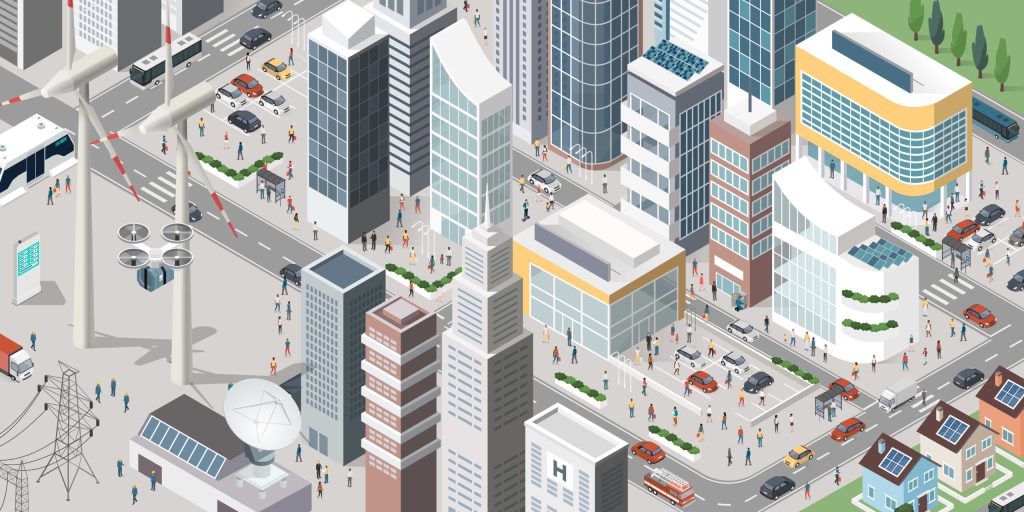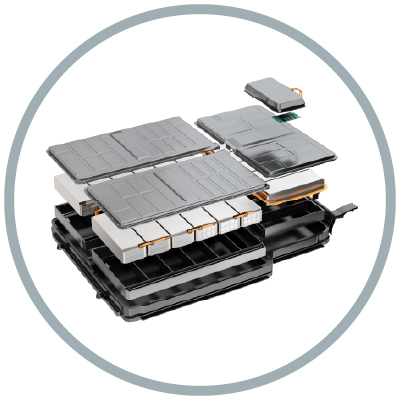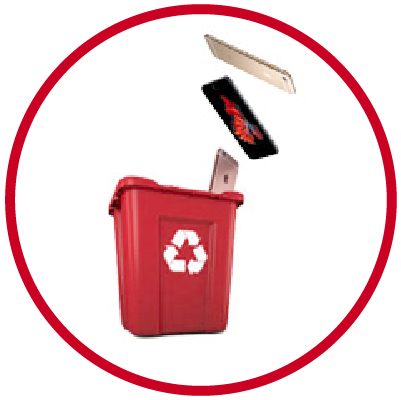A trade-off is the relationship between a benefit and a drawback or risk.
When we weigh trade-offs, we can think about solutions: what we and others can do to maximize benefits and minimize drawbacks.
Throughout this pathway, we'll evaluate the benefits and drawbacks of the lithium-ion batteries that power mobile phones (and so much more).
Where are lithium-ion batteries in our community?
Click on the hotspots below to discover devices that use lithium-ion batteries. Think about similarities and differences you notice between these devices. And be on the lookout for things you use and see in your own life…
Think about the different devices that use lithium-ion batteries as a source of power.
Select the statements below that you agree with.
Why do we use lithium-ion batteries?
Lithium-ion batteries are portable and powerful. They can store a lot of energy in a small package. And they can be recharged thousands of times. Because of this, they are able to power all of the devices shown in the cityscape above.
Lithium-ion trade-offs
We’re about to explore some of the trade-offs associated with lithium-ion batteries. Below, determine what is a benefit and what is a drawback.
Printable version
Battery benefits
We all benefit from forming communities that are safe and sustainable: able to meet the needs of the present without compromising the needs of the future.
When we build cities to be safe and sustainable, they also become more resilient: able to recover from unfortunate circumstances.
Lithium-ion batteries empower us to construct and live in communities that are safe and sustainable. Check out some examples of how. What do these make you wonder about?
Battery drawbacks
Lithium-ion batteries are powerful, portable, and versatile.
They are also a source of great risk, which is a type of drawback that presents the possibility of danger.
Benefits and risks can emerge at each stage of the supply chain.
Supply Chains
A supply chain is the series of steps from the extraction of raw materials to creating a product and then transporting, using, and disposing of it. Every product we use has its own supply chain.
Below, check out some of the below risks that can emerge throughout the lithium-ion battery supply chain. What do these make you wonder about?
Let’s take a close look at the vocabulary that will help us communicate about supply chains.
Lithium-ion batteries
Lorem ipsum dolor sit amet, consectetuer adipiscing elit, sed diam nonummy nibh euismod tincidunt ut laoreet.Lorem ipsum dolor sit amet, consectetuer adipiscing elit, sed diam nonummy nibh euismod tincidunt ut laoreet.
Supply chains
Lorem ipsum dolor sit amet, consectetuer adipiscing elit, sed diam nonummy nibh euismod tincidunt ut laoreet.
Trade offs
Lorem ipsum dolor sit amet, consectetuer adipiscing elit, sed diam nonummy nibh euismod tincidunt ut laoreet.
Trade-offs, the supply chain, and solutions
Lithium-ion batteries answer the growing demand for portable and renewable energy.
Follow the lithium-ion battery’s global supply chain journey step by step:
Let’s track the journey of your mobile phone battery. Through this journey, we will better understand the trade-offs that emerge throughout the battery supply chain.
We’ll also think about solutions we can pursue to maximize the benefits and minimize the drawbacks.












